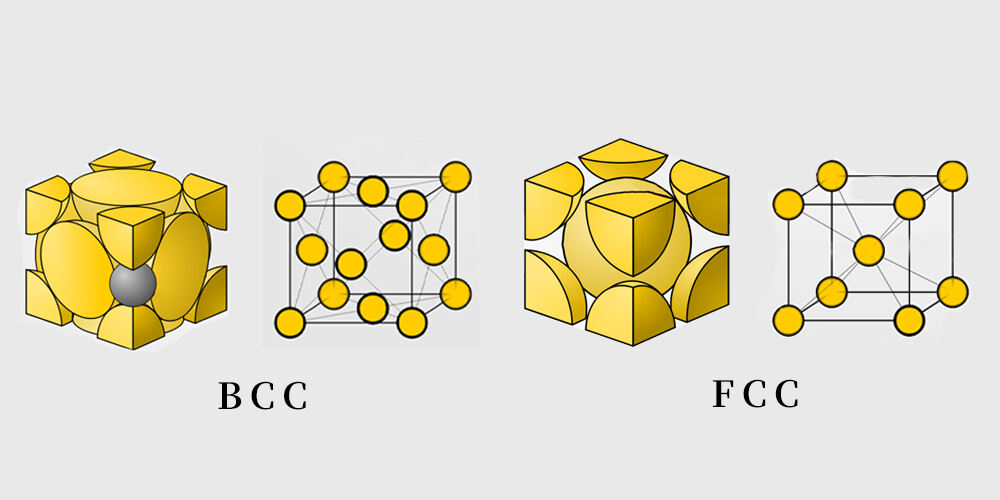Ως υλικό με εξαιρετική ανθεφθαλμία, ανοξείδωτο ατσάλι χρησιμοποιείται ευρέως σε διάφορους τομείς, όπως στην κατασκευή, τα αυτοκίνητα, την διαστημική βιομηχανία, τα οικιακά εlectroσυσκευασματα και τα ιατρικά συσκευασματα. Στην καθημερινή ζωή, μπορούμε μερικές φορές να αισθανθούμε πως κάποια αντικείμενα από οξυχαλκωμένο χάλκινο είναι μαγνητικά, ενώ άλλα όχι. Είναι το οξυχαλκωμένο χάλκινο μαγνητικό; Για να καταλάβουμε αυτό, πρέπει να μελετήσουμε τη σύνθεση, τη δομή και τις μαγνητικές ιδιότητες του οξυχαλκωμένου χάλκινου.
Τι είναι η μαγνητισμός;
Το μαγνητισμός θυμίζει ένα υπερδύναμο στις ταινίες επιστημονικής φαντασίας, αλλά στην πραγματικότητα είναι απλώς η δυνατότητα ενός υλικού να ανταποκριθεί σε ένα μαγνητικό πεδίο. Σύντομα, ο μαγνητισμός είναι η δυνατότητα ενός υλικού να "ελκύει" ή "απωθεί" ένα μαγνήτη. Κάθε υλικό έχει διαφορετικές μαγνητικές προπάνειες, και η μαγνητική κατάσταση του ανθρακιού χάλυβα είναι πολύ διαφορετική.

Ταξινόμηση του Ανθρακιού Χάλυβα :
Ο ανθρακιού χάλυβας είναι ένας σύνθετος χάλυβας με βάση τον σιδήρο, με προσθήκη ορισμένου ποσοστού κρούμιου, νίκελου, μολύβδου και άλλων στοιχείων, και ειδικά υφαντείται και επεξεργάζεται. Είναι ευρέως χρησιμοποιούμενος σε διάφορους τομείς λόγω της εξαιρετικής αντοχής του στην διάβρωση, των καλών μηχανικών ιδιοτήτων του και της ισχυρής αντοχής του στην οξείδωση. Υπάρχουν πολλοί τύποι ανθρακιού χάλυβα, οι οποίοι μπορούν να διαιρεθούν σε διαφορετικούς τύπους βάσει της κρυσταλλικής δομής και της σύνθεσής τους.
 Μαρτενσιτικό χάλυβας:
Μαρτενσιτικό χάλυβας:
Το μαρτενσιτικό αδύψημο χάλκας είναι ένας σύγχυτος με βάση τον σίδερο με υψηλή περιεκτικότητα άνθρακα, ο οποίος έχει τις ιδιότητες υψηλής σκληρότητας, υψηλής ισχύος και ισχυρού μαγνητισμού. Τα βασικά του συστατικά περιλαμβάνουν σίδερο, χρώμιο, άνθρακα και άλλα στοιχεία. Τυπικά μαρτενσιτικά αδύψημα χάλκα include 410 και 420. Επειδή η κρυσταλλική δομή του είναι μια κεντρικά κυβική δομή (BCC), έχει ισχυρό μαγνητισμό. Αυτό γίνεται επειδή η διάταξη των ατόμων σιδήρου στη δομή BCC επιτρέπει την ύπαρξη περιστροφής ηλεκτρονίων και μαγνητικού ροπής, παράγοντας έτσι μαγνητισμό.
 Αυστενιτικός χάλυβας:
Αυστενιτικός χάλυβας:
Οι πιο κοινές αυστηνιτικές ανθιδρεσίες χάλυβα είναι οι 304 και 316, των οποίων η κρυσταλλική δομή είναι μια δομή κεντρικού κύβου με πρόστιμο (FCC). Η διάταξη των ιούν στη δομή κεντρικού κύβου με πρόστιμο κάνει τη μαγνητισμό να είναι αδύναμη ή ακόμη και αμελητέα. Εξαιτίας των ειδικών ιδιοτήτων αυτής της δομής, τα αυστηνιτικά ανθιδρέσια χάλυβα είναι γενικά μη μαγνητικά. Ωστόσο, υπό κρύο εργασία (όπως λαδωμό, συρμοβολή, κλάδωση, κλπ.) ή υψηλή πίεση, μέρος της αυστηνιτικής δομής μπορεί να μετατραπεί σε μαρτενσίτη, εμφανίζοντας έτσι μια συγκεκριμένη βαθμό μαγνητισμού.

 Φερριτικός χάλυβας:
Φερριτικός χάλυβας:
Ο ανθιδρέσιος χάλυβας τύπου ferritic είναι ένα είδος ανθιδρεσίων χάλυβα που περιέχει λιγότερο άνθρακα και αποτελείται κυρίως από σίδερο και χρώμιο. Η κρυσταλλική δομή του είναι μια δομή κύβου με κεντρικό κύβο (BCC). Ο ανθιδρεσίων χάλυβας τύπου ferritic, όπως ο τύπος 430, έχει συνήθως ξεκάθαρο μαγνητισμό. Ο ανθιδρεσίων χάλυβας τύπου ferritic έχει ισχυρό μαγνητισμό, ο οποίος εκφράζεται κυρίως στην υψηλή περιεκτικότητα σιδήρου του.
 Διπλός ανθιδρεσίων χάλυβας:
Διπλός ανθιδρεσίων χάλυβας:
Το διπλόξιουχο οξυδιαστικό χάλκας συνδυάζει τις ιδιότητες του αυστενίτη και του φερρίτη, και συνήθως έχει υψηλή ισχύ και αντοχή στην κατάθλιψη. Η δομή του αποτελείται από 50% αυστενίτη και 50% φερρίτη, έτσι ως προς τη μαγνητική του συμπεριφορά, είναι πιο περίπλοκη, με κάποιες μαγνητικές και κάποιες μη μαγνητικές ιδιότητες του αυστενιτικού οξυδιαστικού χάλκα.
Παράγοντες που επηρεάζουν τη μαγνητική απόδοση του οξυδιαστικού χάλκα :
Χημική Σύνθεση:
Η χημική σύνθεση του οξυδιαστικού χάλκα άμεσα επηρεάζει τη μαγνητισμού του. Για παράδειγμα, η προσθήκη περισσότερου νίκελου προάγει την αυστενιτοποίηση και κάνει τον οξυδιαστικό χάλκα μη μαγνητικό. Στοιχεία όπως το κρομίο, ο σίδερος και το άνθρακας έχουν κάποια επίπνευση στον μαγνητισμό, ειδικά το φερριτικό οξυδιαστικό χάλκα με υψηλότερο περιεχόμενο κρομίου συνήθως έχει μεγαλύτερο μαγνητισμό.
Διαδικασία επεξεργασίας:
Η ψυγρή εργασία μπορεί να αυξήσει τη μαγνητισμό με την παρουσίαση έπιπλων και διαφορών στον πλέγματα, προκαλώντας τη μετατροπή του αυστενίτη σε μάρτενσιτη. Από την άλλη πλευρά, η θερμική επεξεργασία αλλάζει την κρυσταλλική δομή μέσω διαδικασιών θέρμανσης και ψύξης, που μπορεί να οδηγήσει στην αδυναμία ή ενίσχυση του μαγνητισμού.
Επιρροή της Θερμοκρασίας:
Σε χαμηλές θερμοκρασίες, ο αυστενιτικός αδύψωτος χάλυβας μπορεί να μετατραπεί μερικώς σε μάρτενσιτη, με αποτέλεσμα να ενισχυθεί ο μαγνητισμός του, ενώ σε υψηλές θερμοκρασίες, ο μαγνητισμός του αυστενιτικού αδύψωτου χάλυβα είναι συνήθως αδύναμος ή ακόμη και εξαφανισμένος.
Πώς να επιλέξετε;
Το οξυδιούστεο χάλκας χρησιμοποιείται ευρέως σε πολλά τομείς, και η μαγνητισμός είναι επίσης ένας από τους παράγοντες που πρέπει να ληφθούν υπόψη. Σε μερικές περιπτώσεις, ο μαγνητισμός του υλικού δεν μπορεί να αγνοηθεί, ειδικά σε περιβάλλοντα που περιλαμβάνουν μαγνητικά πεδία ή μαγνητική δια摄οράσεις. Σε άλλες περιπτώσεις, το μη-μαγνητικό οξυδιούστεο χάλκας μπορεί να είναι πιο δημοφιλές, ειδικά στους τομείς της ιατρικής και της επεξεργασίας τροφίμων, όπου οποιαδήποτε μαγνητική δια摄οράσεις πρέπει να αποφεύγονται. Για παράδειγμα, τα ιατρικά συσκευάσματα και τα επισκευαστικά μηχανήματα για την επεξεργασία τροφίμων απαιτούν συχνά τη χρήση μη-μαγνητικού οξυδιούστεου χάλκα προκειμένου να αποφεύγεται η δια摄οράσεις με τα υπολογιστικά ή να αποφεύγεται η μίξη μετάλλων στα τρόφιμα. Στην κατασκευή αυτοκινήτων, ο μαγνητικός φερριτικός οξυδιούστεος χάλκας μπορεί να χρησιμοποιείται ευρέως σε τμήματα όπως τα πλαίσια του σώματος.
Είναι το αδιάβλητο χάλκας μαγνητικό; Η απάντηση δεν είναι απόλυτη. Εάν το αδιάβλητο χάλκας είναι μαγνητικό εξαρτάται από τη σύνθεσή του, τη δομή, την τεχνολογία επεξεργασίας και τις εξωτερικές συνθήκες. Η κατανόηση της μαγνητικής επίδρασης των διαφόρων τύπων αδιάβλητου χάλκα παίζει κρίσιμο ρόλο για την επιλογή υλικού και την πρακτική εφαρμογή.
Είμαστε επαγγελματικός κατασκευαστής χάλκου. Εάν έχετε οποιαδήποτε ανάγκη, μπορείτε να μας επικοινωνήσετε κάθε στιγμή!
 +86 17611015797 (WhatsApp )
+86 17611015797 (WhatsApp )  info@steelgroups.com
info@steelgroups.com
